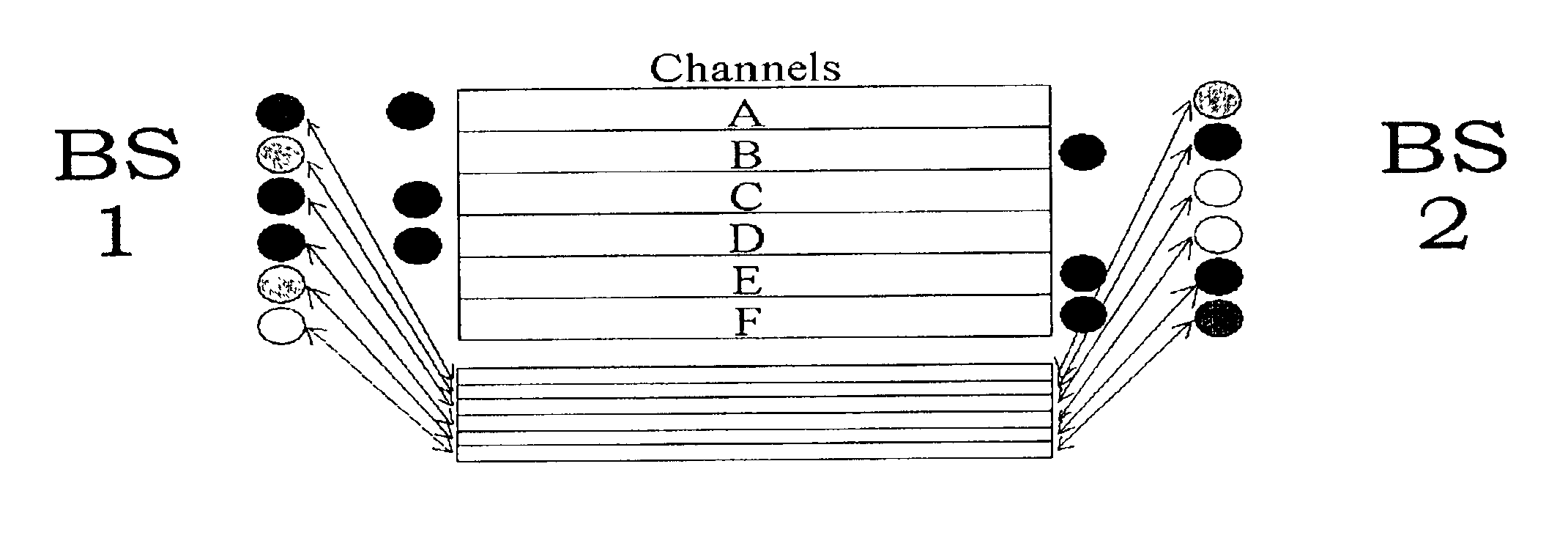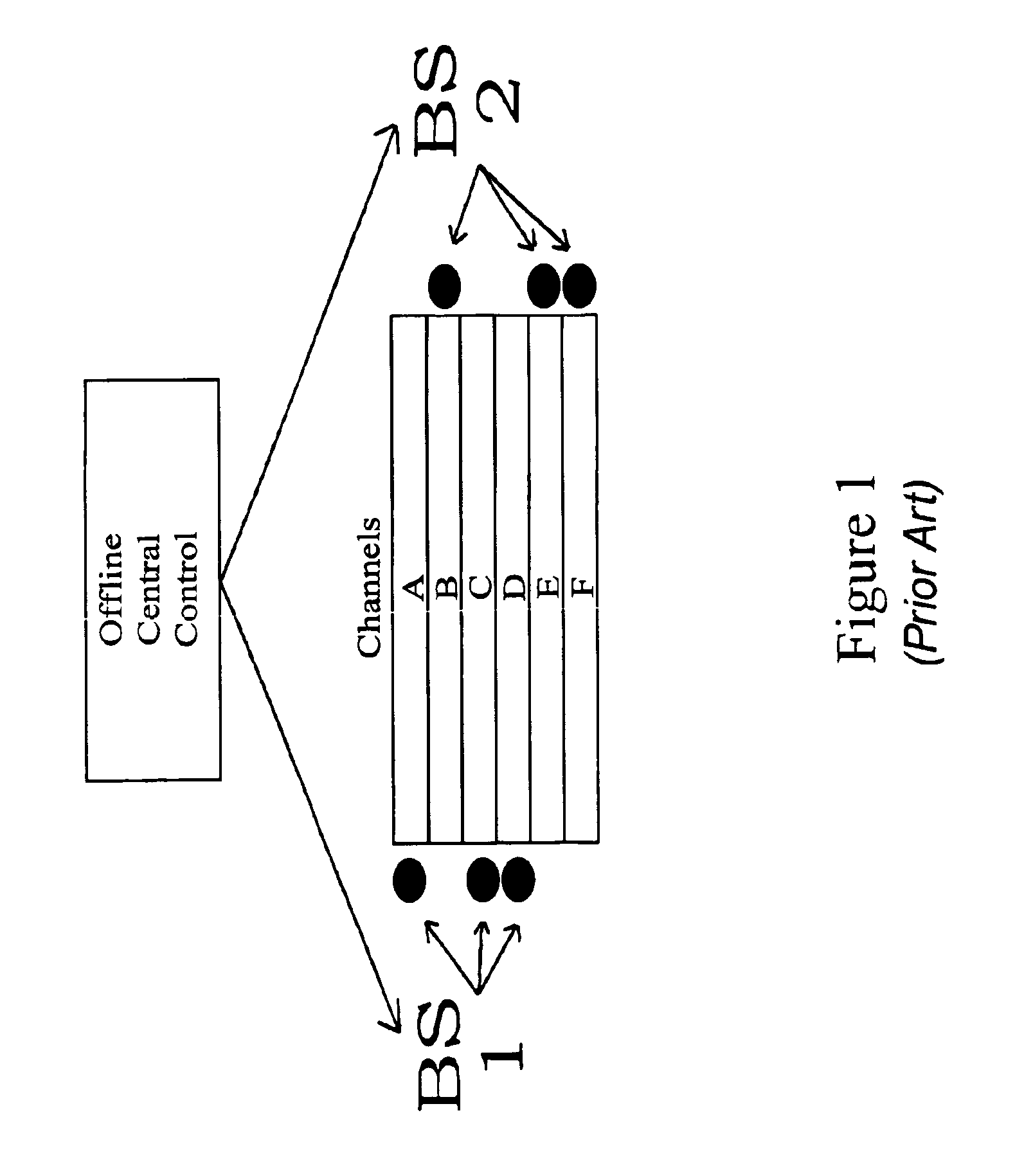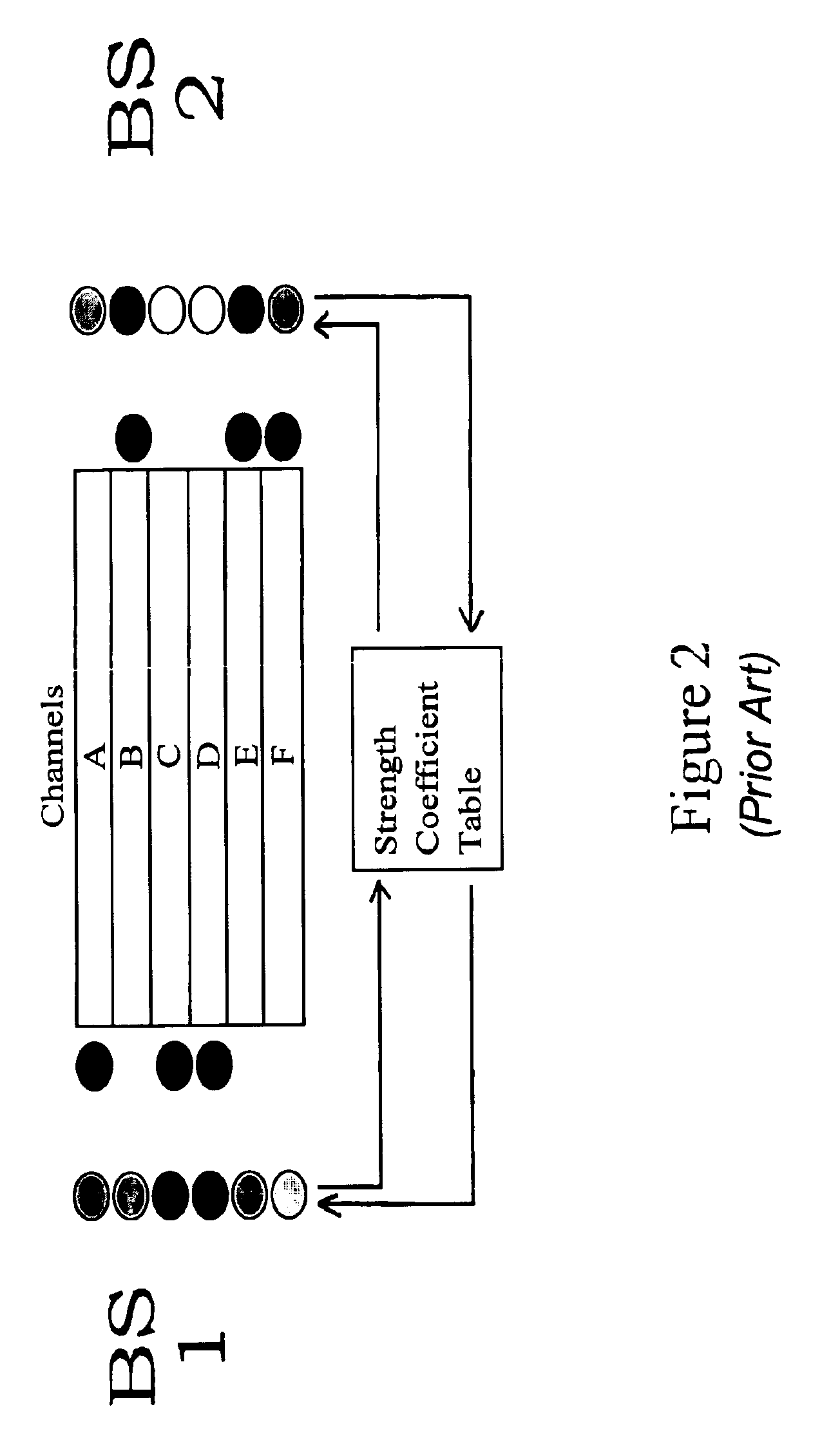Allocation of channels to radio transceivers
a technology of radio transceivers and channels, applied in the field of allocation of channels to radio transceivers, can solve the problems of insufficient such channels, liable to interference, and possible interference between phone calls, and achieve the effect of avoiding inaccuracy and reducing the effort of compiling the tabl
- Summary
- Abstract
- Description
- Claims
- Application Information
AI Technical Summary
Benefits of technology
Problems solved by technology
Method used
Image
Examples
Embodiment Construction
[0032]In FIGS. 1 to 3 two base station transceivers BS1, BS2 are shown, which both have access to six traffic channels A,B,C,D,E,F. In the Prior Art system of FIG. 1 a central controller determines the optimal allocation. This happens ‘offline’ based on interference and blocking data collected over a period of time. The optimal allocation is then imposed on the network. The optimal allocation is indicated by the markers in FIG. 1, in which Channels A,C,D are allocated to BS1 and channels B,E,F to BS2.
[0033]FIG. 2 shows the allocation method of the prior art system disclosed in WO99 / 56488. Each base station holds a set of preference values, indicated by the graduated shading of the six channel markers in FIG. 2. The base stations communicate these preferences to other base stations in the network, which multiply them by the relevant coefficient in the globally agreed strength coefficient table. The resulting values are used as inhibitory pressures on the preference values in the othe...
PUM
 Login to View More
Login to View More Abstract
Description
Claims
Application Information
 Login to View More
Login to View More - R&D
- Intellectual Property
- Life Sciences
- Materials
- Tech Scout
- Unparalleled Data Quality
- Higher Quality Content
- 60% Fewer Hallucinations
Browse by: Latest US Patents, China's latest patents, Technical Efficacy Thesaurus, Application Domain, Technology Topic, Popular Technical Reports.
© 2025 PatSnap. All rights reserved.Legal|Privacy policy|Modern Slavery Act Transparency Statement|Sitemap|About US| Contact US: help@patsnap.com



